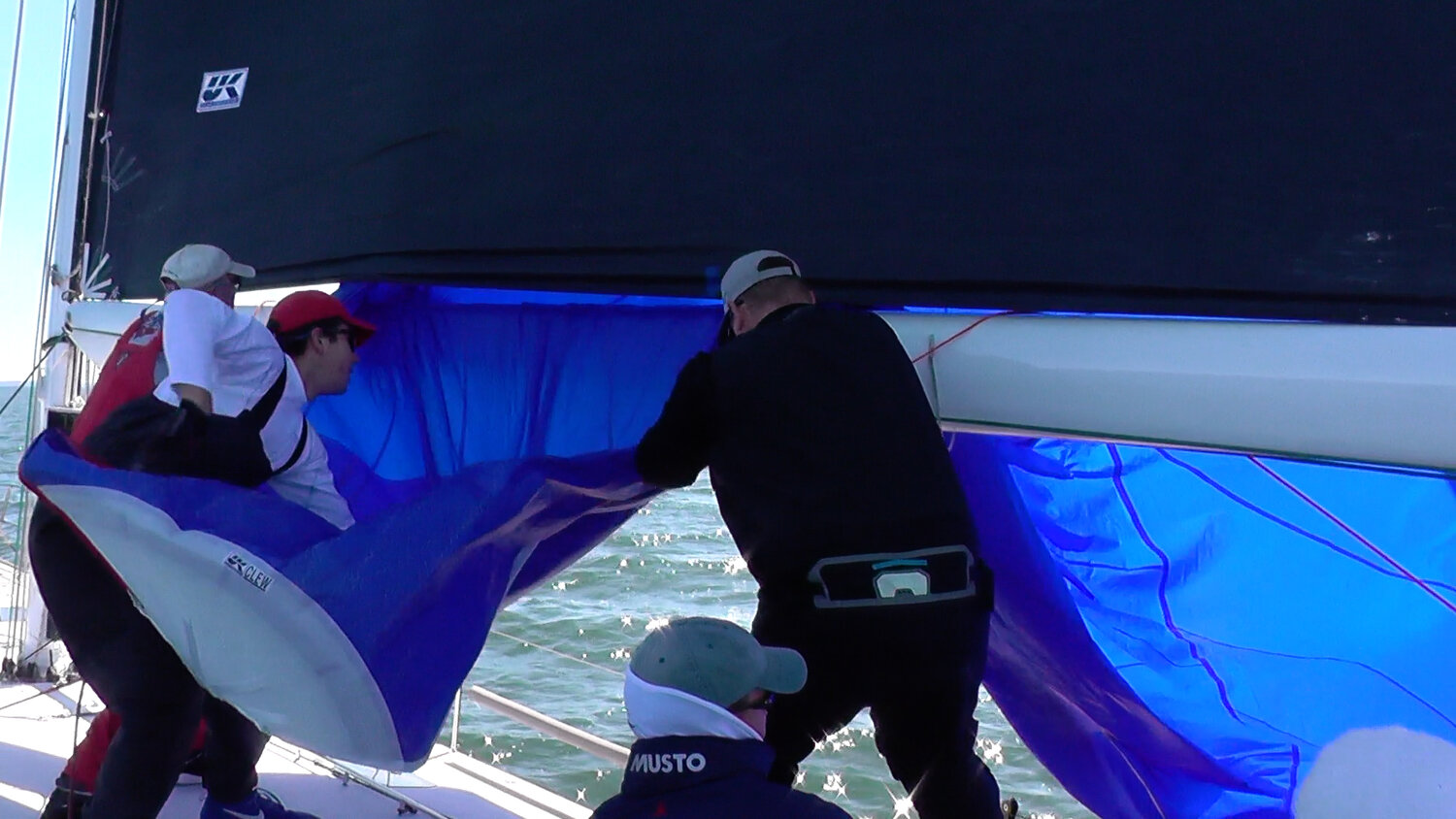So I'm not really a rookie to sailing in general, but I'm very new to flying a spinnaker. I have a Beneteau 373, and flew my asym spinnaker this summer for the first time. I've never flown a spinnaker before, so everything I know, I learned from watching a handful of videos (and reading) online. I picked a day with fairly light wind (5-10kts) where I would be on the same tack (broad reach) for a good distance (a couple of hours). The spinnaker I have has a sock... which I loved, and make the whole process much simpler... especially where I sail with my wife and kids as "crew" who know less about this sort of thing than I do.
Anyhow, long-story-short... it went surprisingly well. But near the end of my sail, the wind started to build and got to a point where it was starting to overpower the boat and get a little scary. In hind sight I probably should have doused the spinnaker a little earlier than I did, but no harm, done, and it was a learning experience. Most of what I did to rig/raise/use the spinnaker went very well, but the one thing I did wrong was in rigging the tack line. I fed it through a block I have out on my anchor roller... maybe a foot or a little more ahead of my roller furled jib. I then took the short tack line and brought it back to to a cleat I have on the foredeck. While it worked well while sailing, I realized the problem when I was trying to lower/douse the spinnaker. The line was under lots of load (while sailing) and the end attached to the sail was out of reach from the deck... and the cleated end of the line was difficult to uncleat under load. The method I used was to set that line free... sending the spinnaker up and out like a giant kite, and then pulling the sock line down. All of which worked fantastically except for the difficulty uncleating a line under load. I can't use a quick-release snap shackle there, because it would have to get sucked forward through a block when I free it. I can't use a shackle on the other end either, because I can't (easily/safely) reach the corner of the sail. Rather than reinvent the wheel... I figured I'd ask what others do with similar sails and boats. Advice?
Anyhow, long-story-short... it went surprisingly well. But near the end of my sail, the wind started to build and got to a point where it was starting to overpower the boat and get a little scary. In hind sight I probably should have doused the spinnaker a little earlier than I did, but no harm, done, and it was a learning experience. Most of what I did to rig/raise/use the spinnaker went very well, but the one thing I did wrong was in rigging the tack line. I fed it through a block I have out on my anchor roller... maybe a foot or a little more ahead of my roller furled jib. I then took the short tack line and brought it back to to a cleat I have on the foredeck. While it worked well while sailing, I realized the problem when I was trying to lower/douse the spinnaker. The line was under lots of load (while sailing) and the end attached to the sail was out of reach from the deck... and the cleated end of the line was difficult to uncleat under load. The method I used was to set that line free... sending the spinnaker up and out like a giant kite, and then pulling the sock line down. All of which worked fantastically except for the difficulty uncleating a line under load. I can't use a quick-release snap shackle there, because it would have to get sucked forward through a block when I free it. I can't use a shackle on the other end either, because I can't (easily/safely) reach the corner of the sail. Rather than reinvent the wheel... I figured I'd ask what others do with similar sails and boats. Advice?







